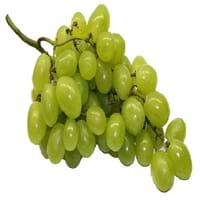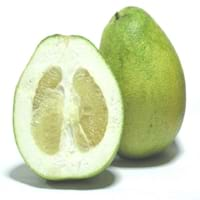Health Benefits
Cancer prevention, Kidney stone treatment, Prevents constipation, Treatment of alzheimer's disease
Cancer prevention, Heart care, Prevents Urinary Tract Infection
General Benefits
Digestive aid, Improves eye vision, Maintains healthy cholesterol level, Treatment of migraine
Digestive aid, Fights against infections, Flu treatment, Healing of wounds, Helps in weight loss, Treatment of common cold
Skin Benefits
Anti-aging benefits, Heals sunburn, Skin rejuvenation, Treatment of dark spots
Anti-aging benefits, Brightens and lightens complexion
Hair Benefits
Prevents hair loss, Regulates hair growth, Treatment of dandruff
Promotes longer and healthier hair, Protects hair
Allergy Symptoms
Anaphylaxis, Asthma, Breathing difficulty, Coughing, Drop in blood pressure, Hives, Skin rash, Stuffy nose, Swelling of mouth, tongue or lips, Wheezing
Abdominal cramps, Abdominal pains, Diarrhea, Lightheadedness, Nasal congestion, Nausea, Swallowing difficulties, Swelling of mouth, tongue or lips, Vomiting
Side Effects
Allergic reaction, Skin rash, Might slow down the process of blood clotting
Allergic reaction, Dizziness, Stomach pain
Best Time to Eat
As a snack in the late afternoon, Don't consume at night and before bed, Eat the fresh ones, avoid mixing with any other foods, don't eat after meal., Morning time (before lunch)
As a snack in the late afternoon, Don't consume at night and before bed, Eat the fresh ones, avoid mixing with any other foods, don't eat after meal., Morning time (before lunch)
Vitamin A (Retinol)
Not Available
Vitamin B5 (Pantothenic Acid)
Not Available
Vitamin B9 (Folic acid)
Not Available
Vitamin C (Ascorbic Acid)
Vitamin E (Tocopherole)
Not Available
Vitamin K (Phyllochinone)
Not Available
Lutein+Zeaxanthin
Not Available
Phytosterol
Not Available
Calories in Fresh Fruit with Peel
Calories in Fresh Fruit without Peel
Not Available
Not Available
Calories in Frozen Form
Not Available
Calories in Canned Form
Not Available
Calories in Jam
Not Available
Type
Berry
Citrus, Tropical
Season
Autumn, Summer
All seasons
Varieties
Cabernet Sauvignon, Merlot, Pinot Noir, Syrah/Shiraz and Zinfandel
Chandler, Cocktail, Cuban Shaddock, Hirado Buntan, Honey, Jaffa Red, Mato Buntan, Pomelit, Reinking, Siamese Sweet and Sweetie
Color
Green, Red
Green, Pink, Red, Yellow
Inside Color
Light Green
Creamy Yellow
Taste
Sweet-Sour
Juicy, Sweet
Origin
Western Asia, Central Europe
Malaysia, South-Eastern Asia, Thailand
Soil Type
Clay loam, Sandy loam
Clay, Loam, Sandy
Climatic Conditions
Warm
Warm
Facts about
- If left alone, a grapevine can spread 50 feet and even more.
- There are more than 8,000 varieties of grape worldwide.
- They are available in 7 different colors: red, green, white, black, purple, blue and golden.
- Flowers of pomelo fruit are used to make perfumes.
- Pomelo tree wood is used for the manufacture of tool handles.
- Life of pomelo tree is around 10 years.
- Height of pomelo can be 15-20 feet.
Other Countries
Argentina, Armenia, Australia, Chile, France, Iran, Italy, Portugal, Romania, Turkey, United States of America
Argentina, India, Israel, Mexico, South Africa, Sudan, Thailand, Turkey, United States of America
Top Importer
United States of America
Europe
Top Exporter
Chile
United States of America
Botanical Name
Vitis vinifera
Citrus maxima
Synonym
Not Available
Citrus grandis
Subkingdom
Tracheobionta
Tracheobionta
Division
Magnoliophyta
Magnoliophyta
Class
Magnoliopsida
Magnoliopsida
Species
Vitis vinifera
C. maxima
Generic Group
Grape
Citrus fruit
Difference Between Grape and Pomelo
We might think that Grape and Pomelo are similar with respect to nutritional value and health benefits. But the nutrient content of both fruits is different. Grape and Pomelo Facts such as their taste, shape, color, and size are also distinct. The difference between Grape and Pomelo is explained here.
The amount of calories in 100 gm of fresh Grape and Pomelo with peel is 69.00 kcal and 38.00 kcal and the amount of calories without peel is Not Available and Not Available respectively. Thus, Grape and Pomelo belong to Low Calorie Fruits and Low Calorie Fruits category.These fruits might or might not differ with respect to their scientific classification. The order of Grape and Pomelo is Vitales and Sapindales respectively. Grape belongs to Vitaceae family and Pomelo belongs to Rutaceae family. Grape belongs to Vitis genus of Vitis vinifera species and Pomelo belongs to Citrus genus of C. maxima species. Beings plants, both fruits belong to Plantae Kingdom.









